

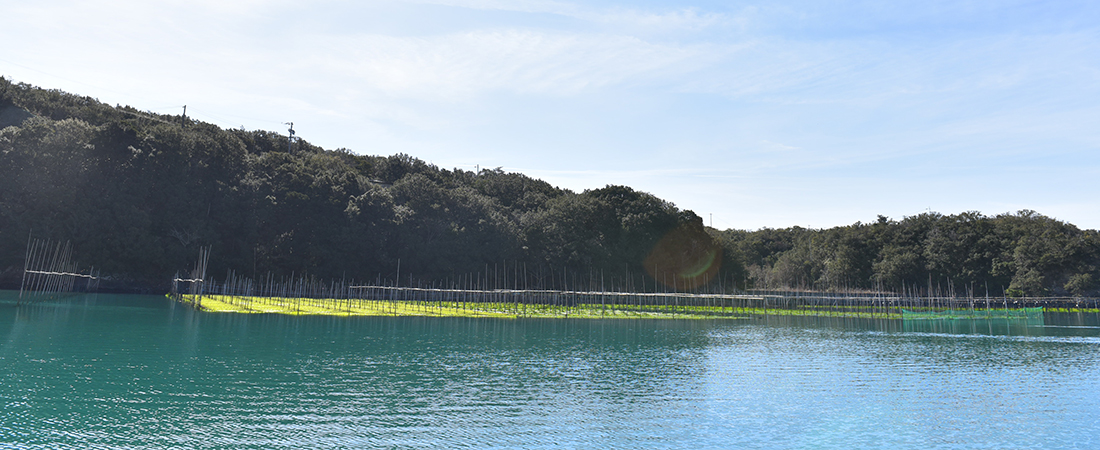
The best time to harvest aosa seaweed is from the end of winter to early spring, when it is soft and ready to eat. Veteran fishermen observe ocean conditions, and select a day when foreign matter floating in the sea will not be mixed in with the seaweed. The seaweed is carefully harvested from the water.
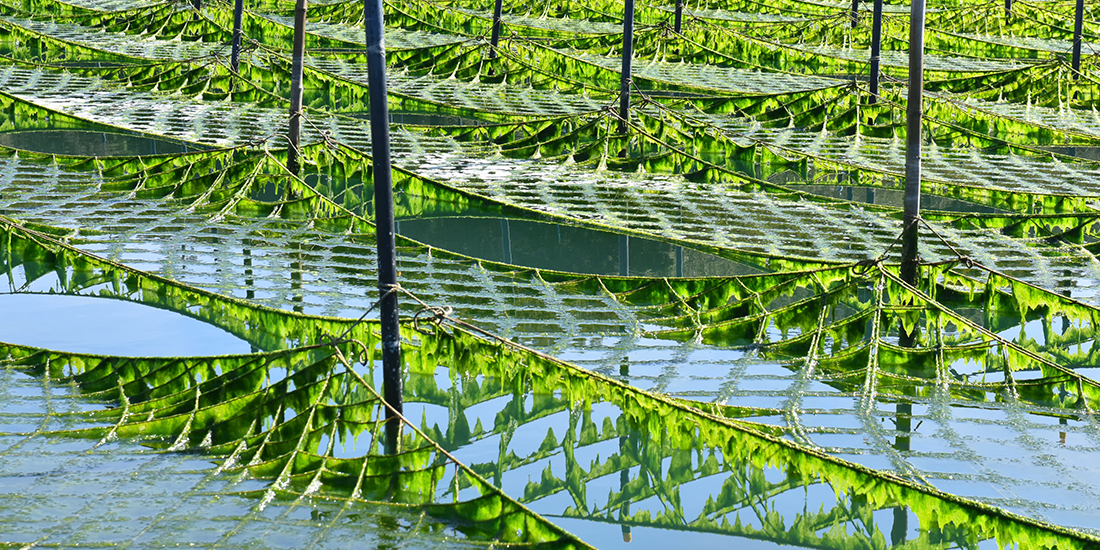
After harvesting, the aosa seaweed is promptly rotated in a large sieve, where it is washed with water and then spun dry. It is then taken to the processing factory where it is spun at a high-speed and divided into smaller pieces. Foreign matter such as leaves and algae are removed in these first processes. Workers then carefully loosen the seaweed and spread it out on a large basket to dry. The seaweed is repeatedly and carefully checked for foreign matter before it is packed and shipped out.
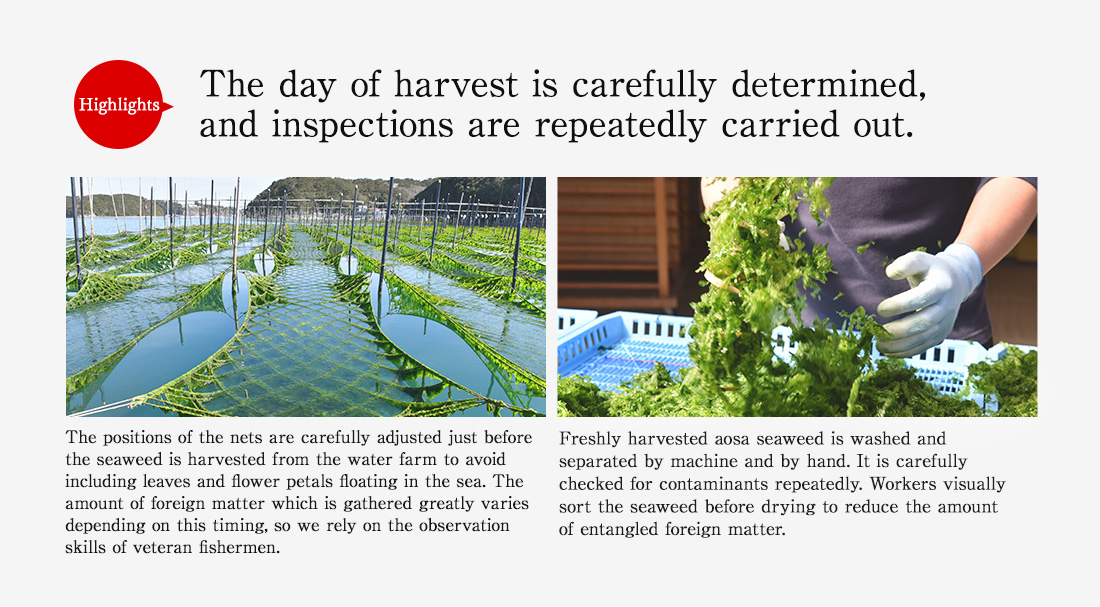

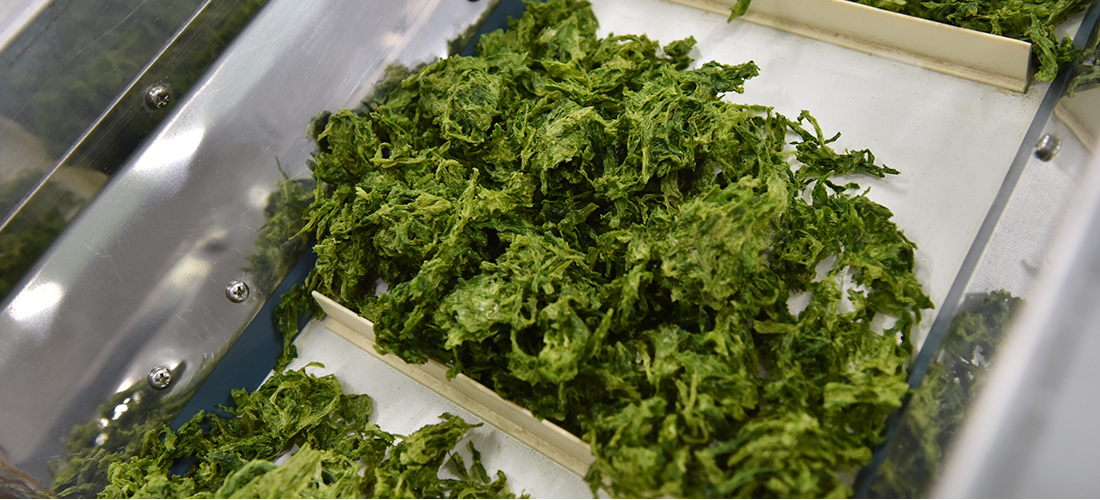
The seaweed supplied to the factory is arranged on the production line. It is coarsely broken into palm-sized pieces and then dried. If the temperature is too high, only the outer surface will dry, so it must be slowly dried at a temperature between 40 and 50°C. The dried aosa seaweed has a crisp texture.
Next, the seaweed is cut to size. It is important to cut it into suitable pieces since risk of contamination increases when the pieces are too large, and the texture is lost if the pieces are too small.
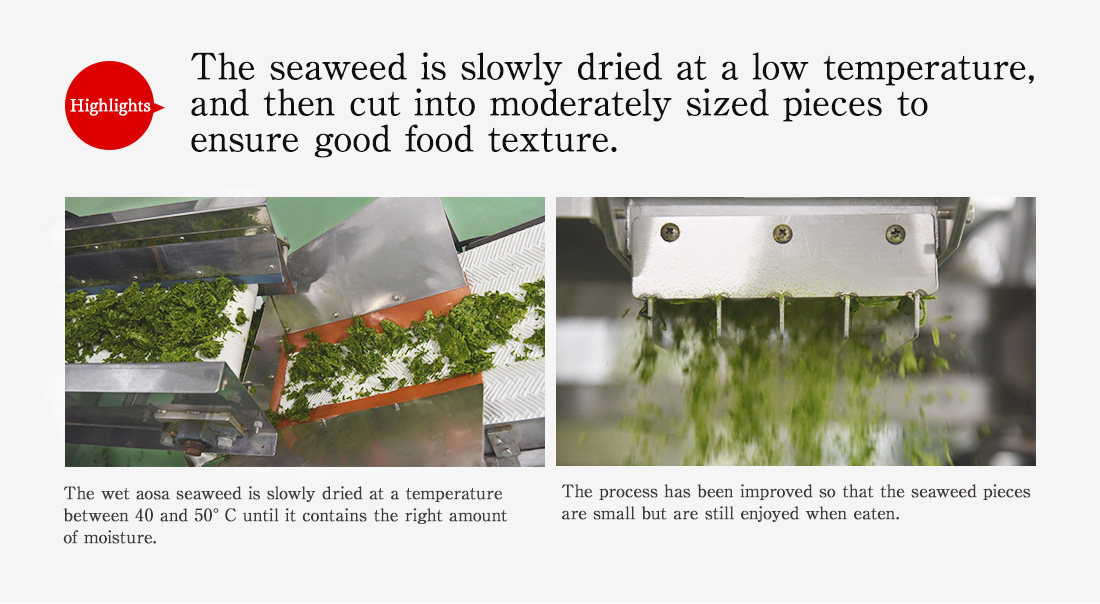

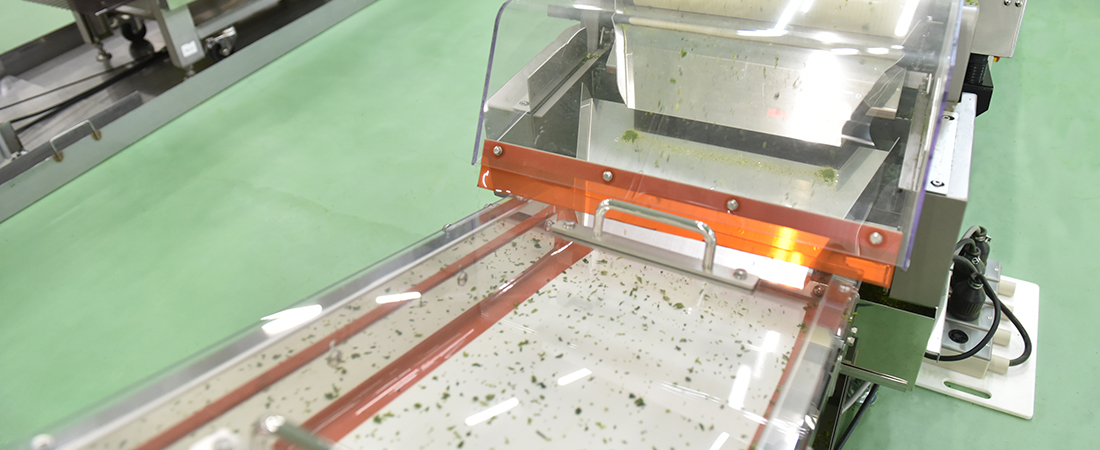
Aosa seaweed is cultivated in a natural ocean environment where foreign matter can easily adhere. In addition, it’s shape easily holds foreign matter, so it’s not always easy to know what will be attached.
We use a variety of sorting devices to identify for foreign matter from various angles. Our current sorting line equipment was designed after repeated trial and error. We use our original expertise in combination with these sorting machines and setting machine speed, etc.
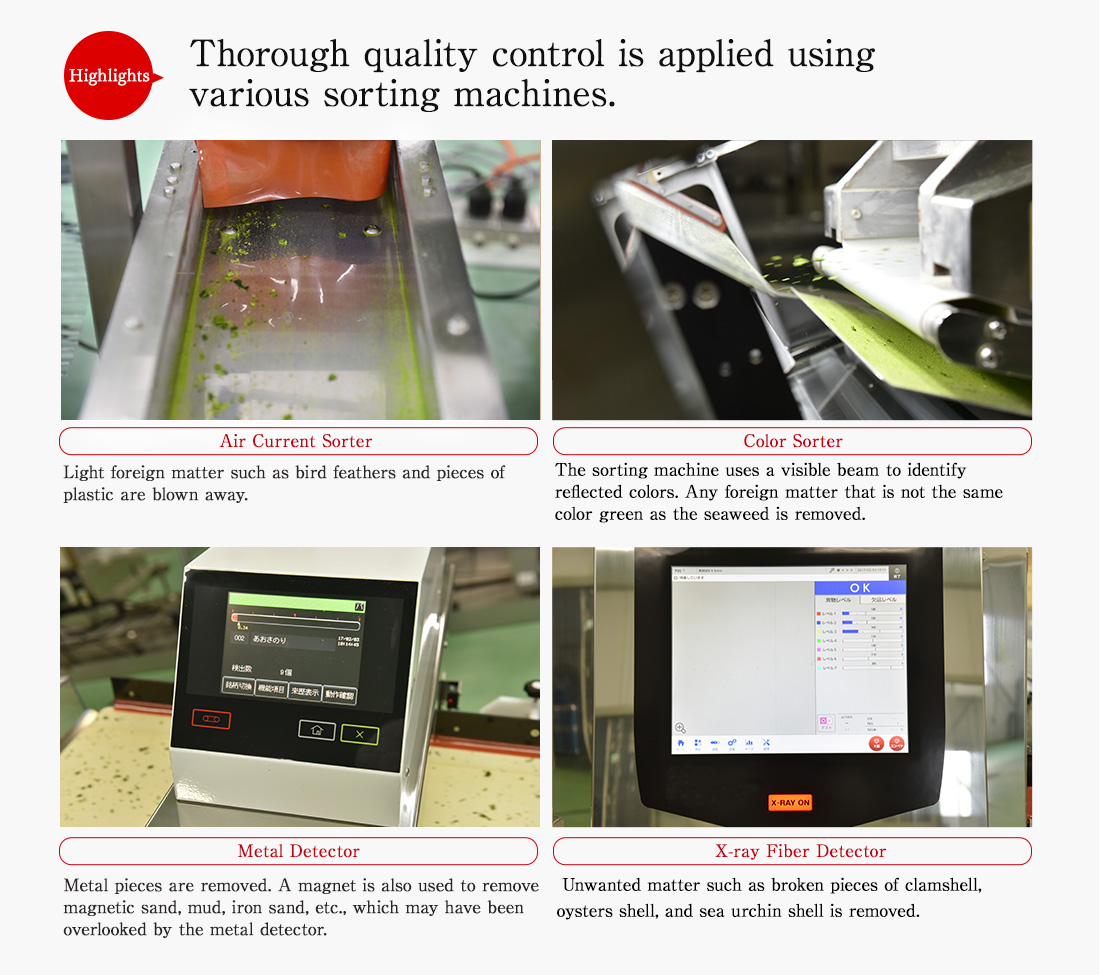

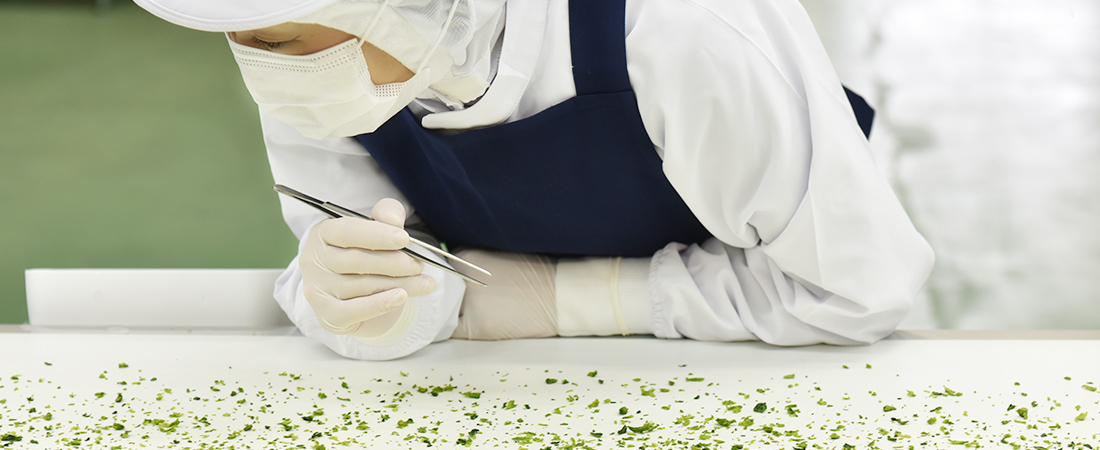
Several skilled workers check each piece of dried aosa seaweed that passes along the belt conveyor, and make sure there is no attached foreign matter.
A large amount of aosa seaweed cannot be checked at once, and this step requires a high level of concentration. Less than 10 kilograms are checked in an hour. The seaweed travels at a very slow speed so that the inspectors can remove very small pieces of contaminants. Different colored belt conveyors are used to improve visibility and prevent any foreign matter from being overlooked.
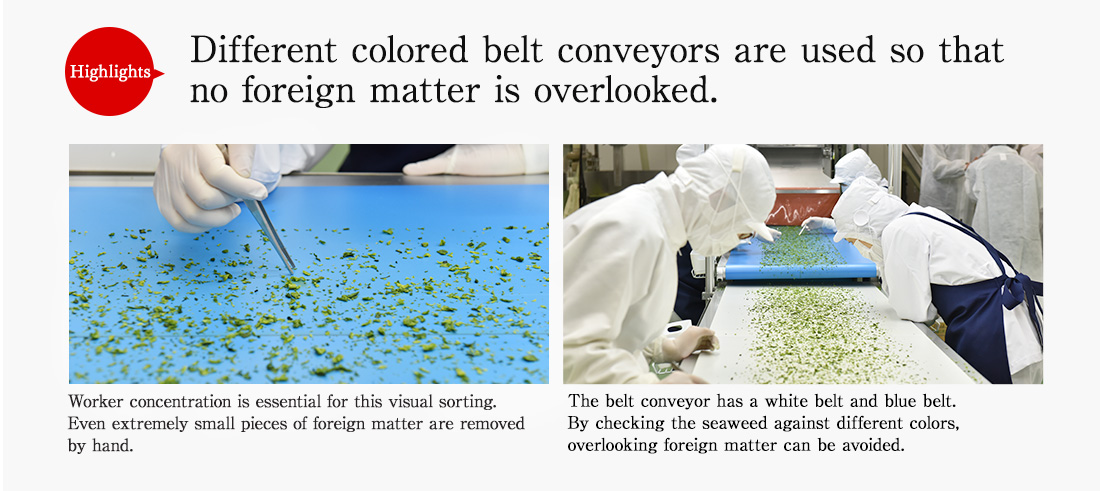

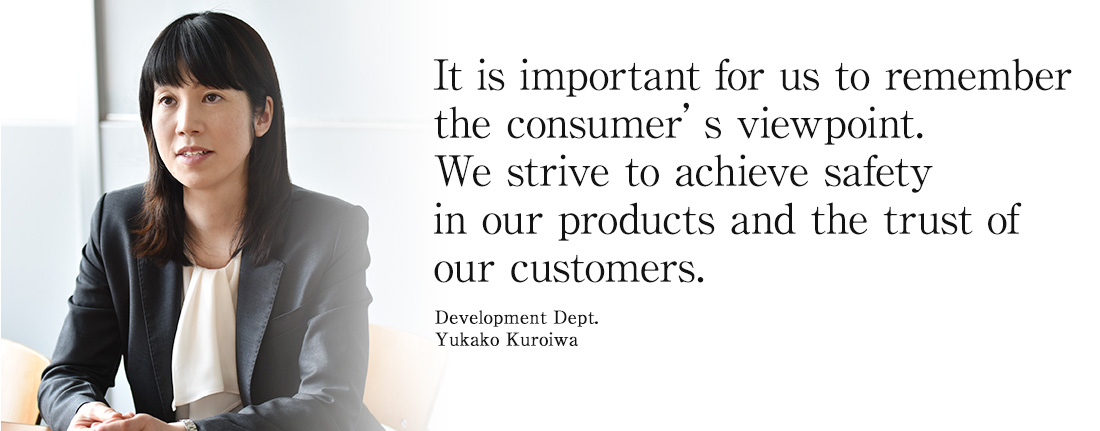
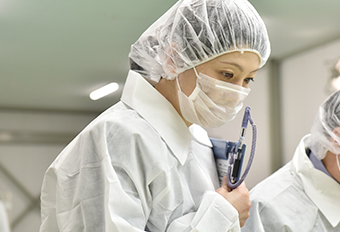
The shape of aosa seaweed easily holds foreign matter, so we pay careful attention during the production process. Manual labor is especially important when processing aosa seaweed. Workers look at small batches of seaweed and carefully remove any foreign matter during this time-consuming production process.
It is important to understand these processing steps and the characteristics of our products. It is also important to understand that we, the producers, also consider the products from the consumer's viewpoint. We know that any problem in the purchased product will instantly leave the consumer with a bad impression of our company. If there are any matters of concern during the initial steps or during various processes, we strive to quickly resolve each one.
As the producers, we will continue to work together as one to delivery safe, trustworthy, and delicious products to our customers.